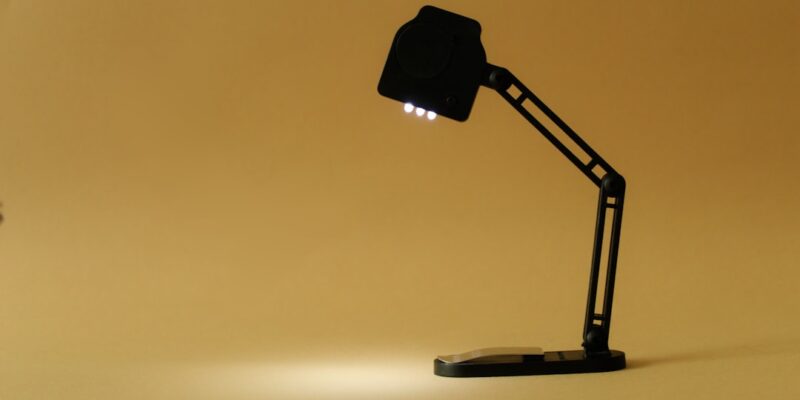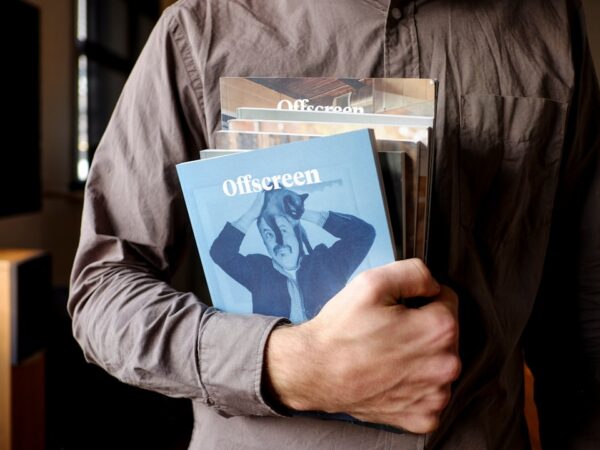
Mastering Product Photography: Top 5 Must-Read Books for Every Photographer
In today’s digital age, where online shopping has become the norm, the significance of product photography cannot be overstated. With the rise of e-commerce businesses, high-quality product images have become essential for attracting customers and driving sales. In fact, studies have shown that consumers are more likely to make a purchase if they are presented with clear and visually appealing product photos.
When shopping online, customers rely solely on product images to make their purchasing decisions. Unlike in physical stores, they cannot touch or feel the products, so the quality of the images becomes crucial in conveying the value and appeal of the products. Therefore, mastering product photography is essential for businesses looking to succeed in the competitive world of e-commerce.
Key Takeaways
- Mastering product photography is crucial for businesses to showcase their products effectively.
- Understanding light, composition, and color are the fundamentals of product photography.
- The top 5 must-read books for product photographers are reviewed comprehensively.
- “Product Photography 101” is a beginner’s guide to shooting and editing product photos.
- “Lighting for Product Photography” provides techniques and tips for capturing the perfect shot.
The Fundamentals of Product Photography: Understanding Light, Composition, and Color
To capture stunning product photos, it is important to understand the fundamentals of lighting, composition, and color theory. Lighting plays a crucial role in product photography as it can enhance or diminish the appearance of a product. Understanding how to manipulate light sources, such as natural light or studio lighting, can help create the desired mood and highlight the product’s features.
Composition is another key aspect of product photography. It involves arranging and positioning the subject within the frame to create an aesthetically pleasing image. The rule of thirds, leading lines, and negative space are some composition techniques that can be used to create visually appealing product photos.
Color theory is also important in product photography as it can evoke certain emotions and influence consumer behavior. Understanding how different colors interact with each other and how they can be used to create a cohesive visual story is essential for creating impactful product images.
Top 5 Must-Read Books for Product Photographers: A Comprehensive Review
1. “Light Science & Magic: An Introduction to Photographic Lighting” by Fil Hunter, Steven Biver, and Paul Fuqua
This book is a comprehensive guide to understanding the principles of lighting in photography. It covers everything from the basic concepts of light to advanced techniques for creating different lighting effects. The book is well-organized and easy to follow, making it suitable for photographers of all skill levels.
2. “Product Photography: A Beginner’s Guide to Creating High-Quality Images” by J. Dennis Thomas
This book is specifically tailored for beginners who want to learn the basics of product photography. It covers topics such as equipment, lighting setups, composition, and post-processing techniques. The book also includes practical exercises and assignments to help readers practice their skills.
3. “The Complete Guide to Digital Photography” by Michael Freeman
While not solely focused on product photography, this book provides a comprehensive overview of digital photography techniques. It covers topics such as exposure, composition, lighting, and post-processing. The book is filled with stunning images and practical tips that can be applied to product photography.
4. “The Art of Photography: An Approach to Personal Expression” by Bruce Barnbaum
This book takes a more artistic approach to photography and explores the creative aspects of the craft. It delves into topics such as visual perception, personal vision, and the creative process. While not specifically focused on product photography, it offers valuable insights into developing a unique style and vision.
5. “Product Photography Handbook: How to Create Professional Looking Product Photos” by Alex Koloskov
This book is a practical guide that covers all aspects of product photography, from equipment and lighting setups to post-processing techniques. It includes step-by-step tutorials and case studies that demonstrate how to achieve professional-looking product photos.
“Product Photography 101”: A Beginner’s Guide to Shooting and Editing Product Photos
| Topic | Metric |
|---|---|
| Introduction | Number of pages |
| Chapter 1: Equipment | List of recommended equipment |
| Chapter 2: Lighting | Explanation of different lighting techniques |
| Chapter 3: Composition | Explanation of composition rules |
| Chapter 4: Shooting | Step-by-step guide to shooting product photos |
| Chapter 5: Editing | Explanation of editing techniques |
| Chapter 6: Final Thoughts | Conclusion and final tips |
For beginners looking to dive into product photography, here is a step-by-step guide on how to shoot and edit product photos:
1. Equipment: Start by investing in a good camera and lens that can capture high-resolution images. A tripod and remote shutter release can also be helpful in achieving sharp and steady shots.
2. Set up a shooting area: Find a well-lit area with ample space to set up your products. Consider using a lightbox or a white backdrop to create a clean and professional look.
3. Lighting: Experiment with different lighting setups to find the one that best suits your product. Natural light, diffused light, or studio lighting can all be used to achieve different effects. Use reflectors or diffusers to control the intensity and direction of the light.
4. Composition: Pay attention to the placement and arrangement of your products within the frame. Use the rule of thirds, leading lines, and negative space to create visually appealing compositions.
5. Camera settings: Set your camera to manual mode to have full control over the exposure settings. Adjust the aperture, shutter speed, and ISO to achieve the desired depth of field and exposure.
6. Shooting: Take multiple shots from different angles and perspectives to capture the product’s features and details. Experiment with different focal lengths and camera angles to find the most flattering shots.
7. Editing: Transfer your images to a computer and use photo editing software such as Adobe Photoshop or Lightroom to enhance the images. Adjust the exposure, contrast, color balance, and sharpness to achieve a polished look.
8. Exporting: Save your edited images in the appropriate file format (JPEG or PNG) and resize them according to the platform or website where they will be displayed.
“Lighting for Product Photography”: Techniques and Tips for Capturing the Perfect Shot
Lighting is one of the most important aspects of product photography as it can make or break an image. Here are some techniques and tips for capturing the perfect shot:
1. Natural light: Utilize natural light whenever possible as it can create soft and flattering lighting conditions. Set up your shooting area near a window or in a well-lit room. Use sheer curtains or diffusers to soften harsh sunlight.
2. Studio lighting: Invest in a basic studio lighting setup consisting of a key light, fill light, and backlight. Experiment with different positions and angles to achieve the desired look. Use diffusers, reflectors, and flags to control the intensity and direction of the light.
3. Light modifiers: Use light modifiers such as softboxes, umbrellas, and beauty dishes to create different lighting effects. Softboxes create soft and even lighting, while umbrellas can create a broader and more diffused light source. Beauty dishes are often used for product photography as they create a focused and flattering light.
4. Reflectors: Use reflectors to bounce light back onto the product and fill in shadows. White reflectors create a soft and natural fill light, while silver or gold reflectors can add warmth or enhance contrast.
5. Light tents or lightboxes: Light tents or lightboxes are useful for creating a controlled environment with diffused lighting. They can help eliminate harsh shadows and create even lighting on the product.
6. Light temperature: Pay attention to the color temperature of your lighting sources. Different light sources have different color temperatures, which can affect the overall look of your images. Use color correction gels or adjust the white balance settings on your camera to achieve accurate colors.
“The Art of Product Photography”: Elevating Your Craft with Creative Vision and Style
While technical skills are important in product photography, creativity and style play an equally significant role in creating impactful images. Here are some tips for developing your own unique style and vision:
1. Study other photographers: Look for inspiration from other product photographers whose work you admire. Analyze their compositions, lighting techniques, and use of color. Take note of what resonates with you and try to incorporate those elements into your own work.
2. Experiment with different styles: Don’t be afraid to step out of your comfort zone and try different styles and techniques. Play with different lighting setups, compositions, and post-processing effects to discover what works best for you.
3. Develop a signature look: Aim to develop a signature style that sets your work apart from others. This can be achieved through consistent use of lighting, composition, color grading, or post-processing techniques. A signature look can help create a cohesive body of work and make your images instantly recognizable.
4. Tell a story: Use your product photos to tell a story or evoke emotions in the viewer. Consider the context in which the product will be used and try to capture images that reflect that context. For example, if you are photographing a coffee mug, consider capturing images of someone enjoying a cup of coffee in a cozy setting.
5. Pay attention to details: In product photography, the details matter. Pay attention to small details such as reflections, textures, and product features. Use macro lenses or close-up shots to capture these details and make your images more engaging.
“The Business of Product Photography”: Strategies for Building a Successful Career in the Industry
Product photography offers various career paths for photographers looking to specialize in this field. Here are some strategies for building a successful business in the industry:
1. Define your niche: Determine what type of products you want to specialize in photographing. Whether it’s fashion, food, jewelry, or electronics, focusing on a specific niche can help you establish yourself as an expert in that area.
2. Build a portfolio: Create a strong portfolio showcasing your best work in product photography. Include a variety of products and demonstrate your versatility and skills in different lighting conditions and compositions.
3. Network with clients: Reach out to potential clients such as e-commerce businesses, advertising agencies, or design studios. Attend industry events, join online communities, and use social media platforms to connect with potential clients and showcase your work.
4. Offer additional services: Consider offering additional services such as retouching, styling, or art direction to add value to your clients. This can help differentiate yourself from competitors and provide a more comprehensive solution for your clients’ needs.
5. Stay up to date with industry trends: Product photography is constantly evolving, so it’s important to stay up to date with the latest trends and techniques. Attend workshops, conferences, and online courses to continue learning and improving your skills.
“Advanced Product Photography”: Techniques for Shooting Complex Products and Challenging Environments
Shooting complex products or in challenging environments can present unique challenges for product photographers. Here are some tips and techniques for overcoming these challenges:
1. Reflective surfaces: When shooting products with reflective surfaces such as glass or metal, controlling reflections becomes crucial. Use polarizing filters or matte sprays to reduce reflections. Position the lights at angles that minimize reflections or use black cards or flags to block unwanted reflections.
2. Transparent objects: When photographing transparent objects such as bottles or glassware, it’s important to capture the transparency and clarity of the product. Use backlighting or side lighting to enhance the transparency. Consider using colored backgrounds or liquids inside the transparent objects to add interest and depth.
3. Low light conditions: In low light conditions, it’s important to use a tripod to avoid camera shake and maintain sharpness. Increase the ISO setting on your camera to capture more light, but be mindful of noise levels. Consider using artificial lighting sources such as LED panels or speedlights to supplement the available light.
4. Tight spaces: When shooting in tight spaces, such as small product studios or cramped locations, it’s important to be creative with your composition and lighting setups. Use wide-angle lenses to capture more of the scene and experiment with different lighting modifiers that can fit in tight spaces.
5. Outdoor environments: When shooting products outdoors, consider the natural lighting conditions and how they can affect the appearance of the product. Use diffusers or reflectors to control the intensity and direction of the sunlight. Be mindful of the weather conditions and plan accordingly to protect your equipment.
“The Role of Post-Processing in Product Photography”: Maximizing Quality and Efficiency in Editing
Post-processing plays a crucial role in product photography as it allows photographers to enhance the quality and visual appeal of their images. Here are some tips for maximizing quality and efficiency in editing:
1. Shoot in RAW: Shoot in RAW format instead of JPEG to have more flexibility in post-processing. RAW files contain more information and allow for greater adjustments in exposure, color, and sharpness.
2. Use photo editing software: Invest in photo editing software such as Adobe Photoshop or Lightroom to edit your images. These programs offer a wide range of tools and features specifically designed for photographers.
3. Batch processing: When editing multiple product photos, use batch processing techniques to save time and maintain consistency. Apply similar adjustments to a group of images at once, such as exposure, color balance, or sharpness.
4. Retouching: Pay attention to retouching details such as dust, scratches, or blemishes on the product. Use spot healing tools or clone stamp tools to remove imperfections and create a clean and polished look.
5. Color grading: Experiment with different color grading techniques to create a specific mood or atmosphere in your images. Adjust the saturation, hue, and contrast to achieve the desired look.
6. Exporting: When exporting your edited images, consider the platform or website where they will be displayed. Resize the images accordingly and save them in the appropriate file format (JPEG or PNG) to ensure optimal quality and compatibility.
The Benefits of Investing in Your Product Photography Education
Mastering product photography is essential for businesses looking to succeed in the competitive world of e-commerce. By understanding the fundamentals of lighting, composition, and color theory, photographers can capture high-quality product images that attract customers and drive sales.
Investing in your education and continuously learning and improving your skills is crucial in staying ahead in the industry. By studying the top books on product photography, following step-by-step guides, and experimenting with different techniques and styles, photographers can elevate their craft and develop their own unique vision.
By understanding the business side of product photography and building a strong portfolio, photographers can turn their passion into a successful career. With the right strategies and networking opportunities, photographers can attract clients and offer additional services to add value to their work.
In conclusion, mastering product photography is not only important for businesses but also for photographers looking to establish themselves in the industry. By continuously learning, experimenting, and developing their own unique style, photographers can create stunning product images that captivate viewers and drive sales. So invest in your education, stay curious, and keep pushing the boundaries of your creativity to become a master of product photography.
If you’re looking to improve your product photography skills, you might want to check out Wave Magnets’ collection of product photography books. These books offer valuable insights and techniques to help you capture stunning images that will make your products stand out. In addition to their books, Wave Magnets also provides a range of other resources and tools to enhance your photography skills. For more information, you can visit their website at https://wavemagnets.com/.
FAQs
What are product photography books?
Product photography books are instructional guides that provide tips, techniques, and insights on how to capture high-quality images of products for commercial purposes. These books cover various topics such as lighting, composition, styling, and post-processing.
Who can benefit from product photography books?
Product photography books can benefit anyone who wants to improve their skills in capturing images of products for commercial purposes. This includes photographers, e-commerce business owners, marketers, and graphic designers.
What are the benefits of reading product photography books?
Reading product photography books can help you improve your skills in capturing high-quality images of products, which can lead to better sales and increased revenue. These books can also provide you with insights on how to create a consistent brand image and stand out from your competitors.
What are some popular product photography books?
Some popular product photography books include “Lighting for Product Photography” by Allison Earnest, “Product Photography Tips for Ebay and Etsy” by Philip Tragen, and “The Art of Product Photography” by J. Dennis Thomas.
Where can I buy product photography books?
Product photography books can be purchased online from retailers such as Amazon, Barnes & Noble, and Adorama. They can also be found in local bookstores and photography shops.


















